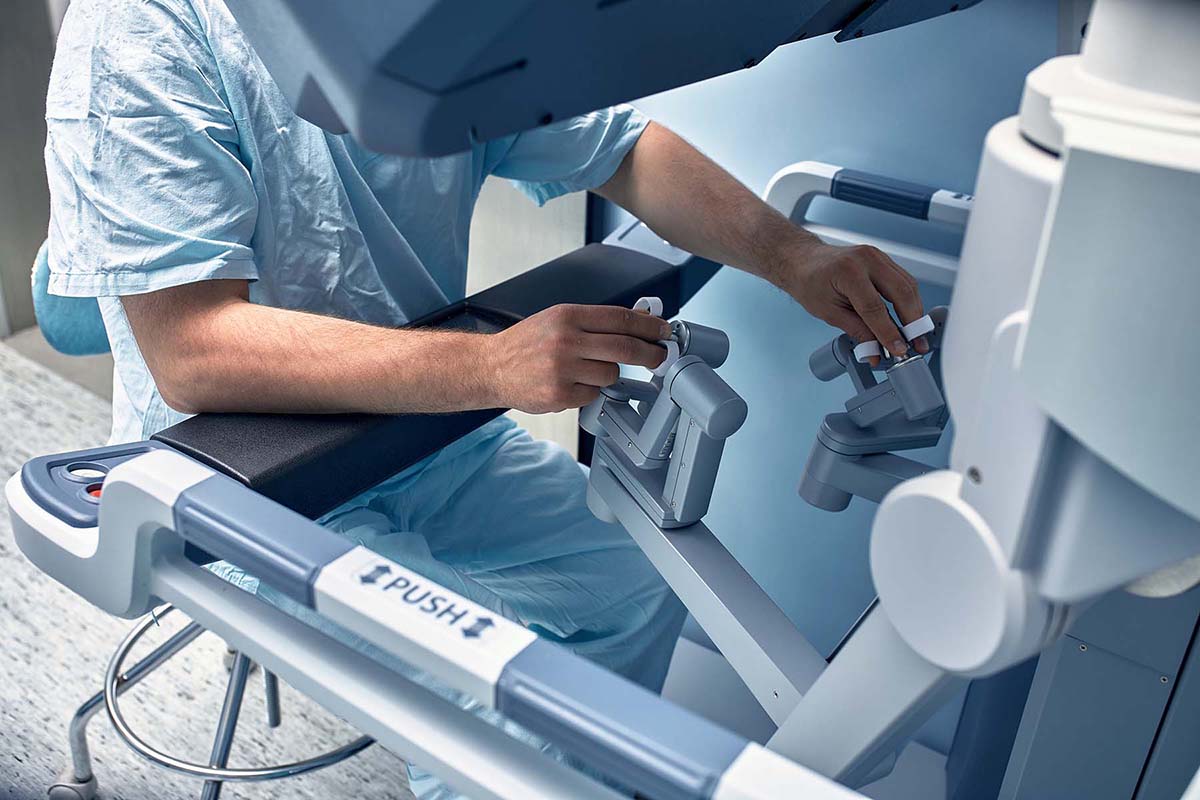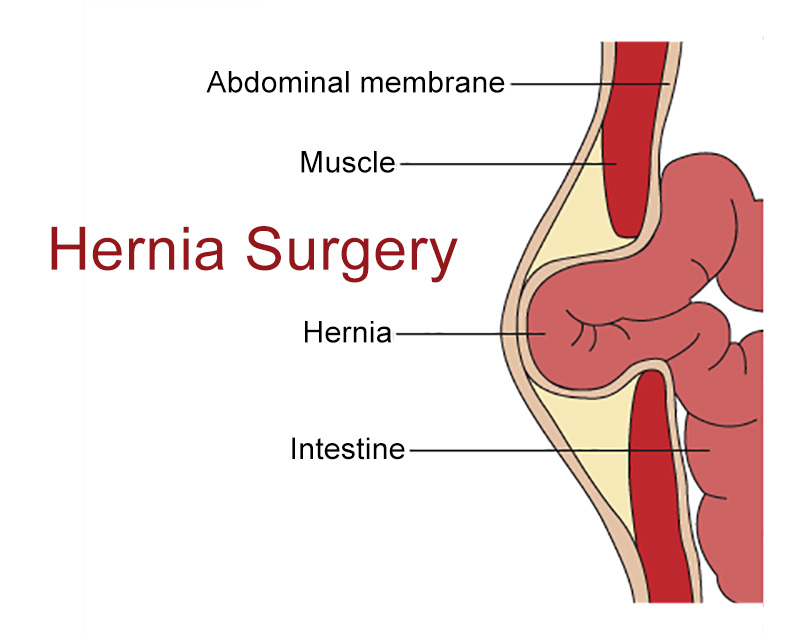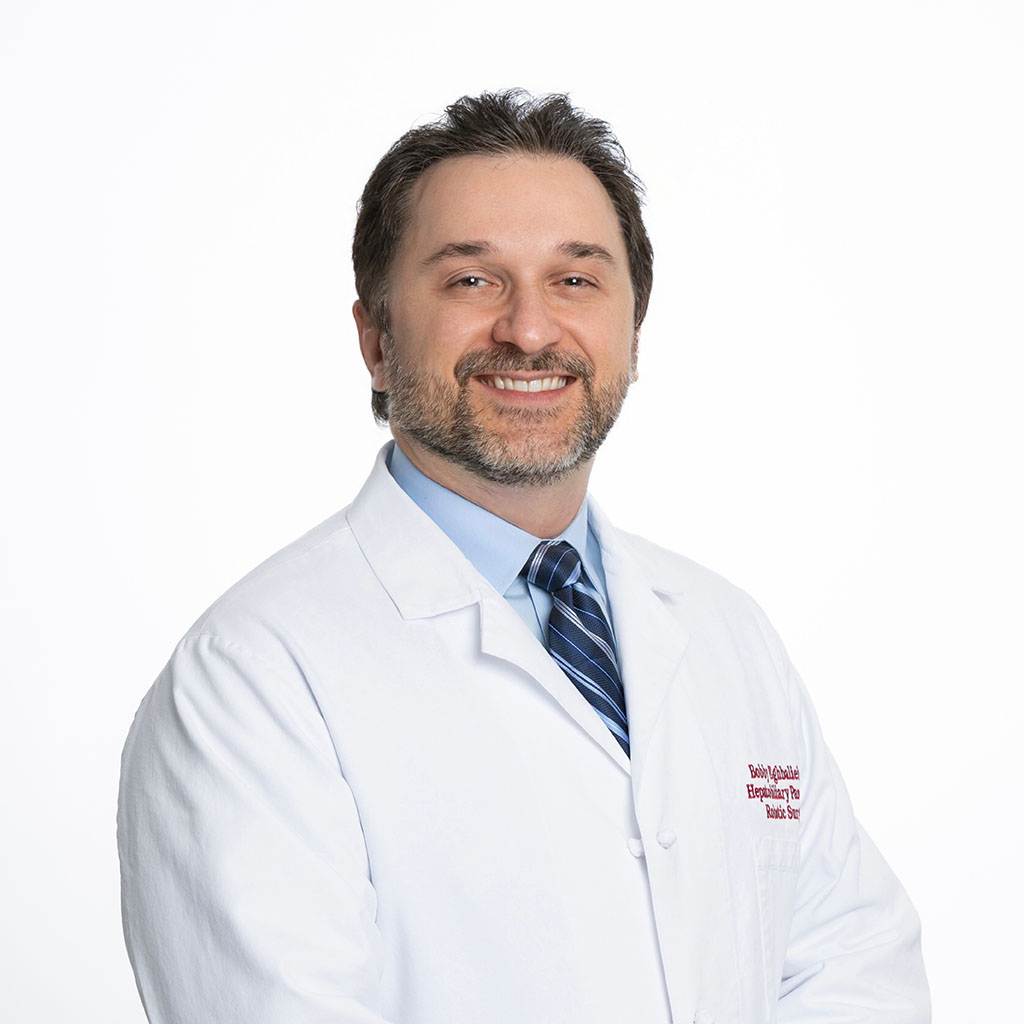Hernia Repair in Los Angeles: Treatments & Top-Rated Surgeons
Get relief from a hernia with minimally invasive surgery. Learn about symptoms, types, and find a hernia specialist near you.
Understanding hernias
What are the different types of hernias?
Hiatal hernias
Develops when the top of the stomach pushes up through the diaphragm muscle (muscle separating chest and abdomen).
Inguinal hernias
An inguinal hernia is the most common type of heria. It develops when tissue — often a part of the intestine — pushes through a weak spot in the abdominal muscles.
Incisional hernias
This type of hernia protrudes through an incision made during a prior operation. Incisional hernias may vary in size from tiny to massive.
Ventral hernias
This is a generic hernia bulging through weak abdominal muscles. It’s sometimes used interchangeably with incisional hernia. When a ventral hernia occurs above the belly button, it’s called an epigastric hernia.
Spigelian Hernia
A relatively rare hernia, it usually develops after age 50, primarily in men. The cause is usually a weakening of the abdominal wall, trauma, or prolonged physical stress.
Umbilical hernias:
Develops when tissue bulges out through an opening in the muscles near the belly button. This type of hernia is especially common in infants and pregnant women.
Symptoms of a hernia
Most hernias cause a noticeable bulge that disappears when you lie down, but it’s important to remember that not everyone with a hernia will experience them. Hernias may be painful when you bend over, lift a heavy object, cough, or laugh. Otherwise, you may experience a dull ache, an increase in the size of the bulge over time, or the feeling that you’re full.
Here are some common symptoms to be aware of:
- Bulge in the abdomen: This is often the most noticeable sign of a hernia. The bulge may appear or become more prominent when you cough, strain, or lift heavy objects.
- Pain: You might feel pain or discomfort in the area of the bulge, especially when you cough, strain, or bend over.
- Weakness or pressure in the abdomen: This can feel like a dragging sensation or a general feeling of heaviness in your abdomen.
If you suspect you have a hernia, it’s important to consult a doctor to get a proper diagnosis and discuss treatment options.
This is especially important if the bulge is strangulated. This means the blood supply to the tissue protruding through the muscle wall has been cut off. A strangulated hernia is a medical emergency and requires immediate surgery. Signs of strangulation include a bulge that becomes red or purple, severe pain, and nausea or vomiting.
Hiatal hernias are an exception – they usually don’t cause a bulge. Instead, they cause symptoms such as heartburn, indigestion, bloating, fullness, difficulty swallowing, and chest pain.
Hernia Repair Surgery
Hernias are often repaired using robotic, laparoscopic, or minimally invasive surgery. Dr. Babak Eghbalieh is a nationally renowned robotic surgeon with the expertise to routinely repair hernias using robot-assisted surgery. He has performed more robotic general surgery than any other surgeon in all of Los Angeles and San Fernando Valley areas. His exceptional attention to detail allows for superb planning and execution of every robotic hernia repair.
Both Dr. Eghbalieh and Dr. Young see patients throughout Southern California, with offices in Sherman Oaks, Valencia, Porter Ranch and Tarzana.
How are hernias treated?
Hernias never resolve on their own. Surgery is the only way to treat a hernia, but it doesn’t have to be open surgery. Dr. Eghbalieh repairs most types of hernias using minimally invasive robotic surgery.
Robot-assisted surgery enhances Dr. Eghbalieh’s ability to see the tissues and perform complex surgical maneuvers with even greater precision than can be done by the human hand. Robotic surgery may also lower the risk of the hernia returning.
Hernia Surgery Q & A
What causes hernias?
Hernias are caused by weakened muscles, which may exist since birth or develop over time from repeated strain on the abdominal muscles. Obesity and pregnancy can weaken abdominal muscles by stretching the tissues. Muscle weakness also develops due to exertion from physical activity, frequent coughing, and straining due to constipation. Hiatal hernias may arise from the weakening of the diaphragm caused by age or pressure.
How do doctors diagnose a hernia?
Doctors diagnose hernias through a combination of methods:
- Physical exam: During a physical exam, your doctor will feel your abdomen to check for bulges or areas of weakness. They may also ask you to cough or strain while they examine you.
- Imaging tests: In some cases, your doctor may recommend imaging tests to get a better view of the hernia and surrounding tissues. These tests might include:
- Ultrasound: This uses sound waves to create an image of your abdomen.
- CT scan: This uses X-rays to create detailed cross-sectional images of your abdomen.
- X-ray: While less common, X-rays might be used in some cases to rule out other conditions that could be causing your symptoms.
By combining these methods, your doctor can accurately diagnose a hernia and determine the best course of treatment for you.
How long does it take to recover from hernia surgery?
Make an Appointment
Schedule an evaluation with Dr. Eghbalieh or Dr. Young at Southern California Multi-Specialty Center to discuss your hernia and explore the benefits of state-of-the-art robotic surgery. Our experienced surgeons can help you achieve a minimally invasive and effective hernia repair, getting you back to your life faster.
To schedule an evaluation with Dr. Eghbalieh at Southern California Multi-Specialty Center, call 818-900-6480.
Make an appointment at SCMSC
We look forward to welcoming you
Schedule an evaluation with Dr. Eghbalieh at Southern California Multi-Specialty Center.





